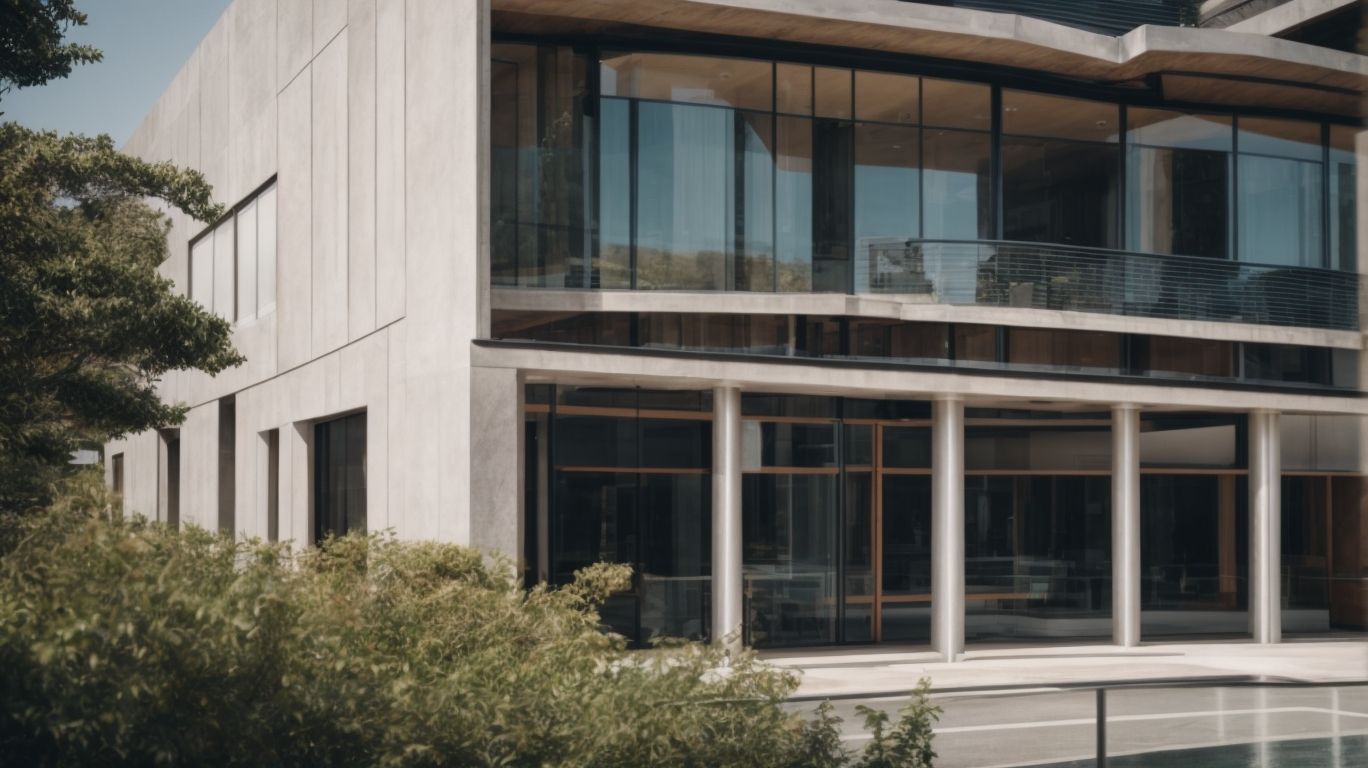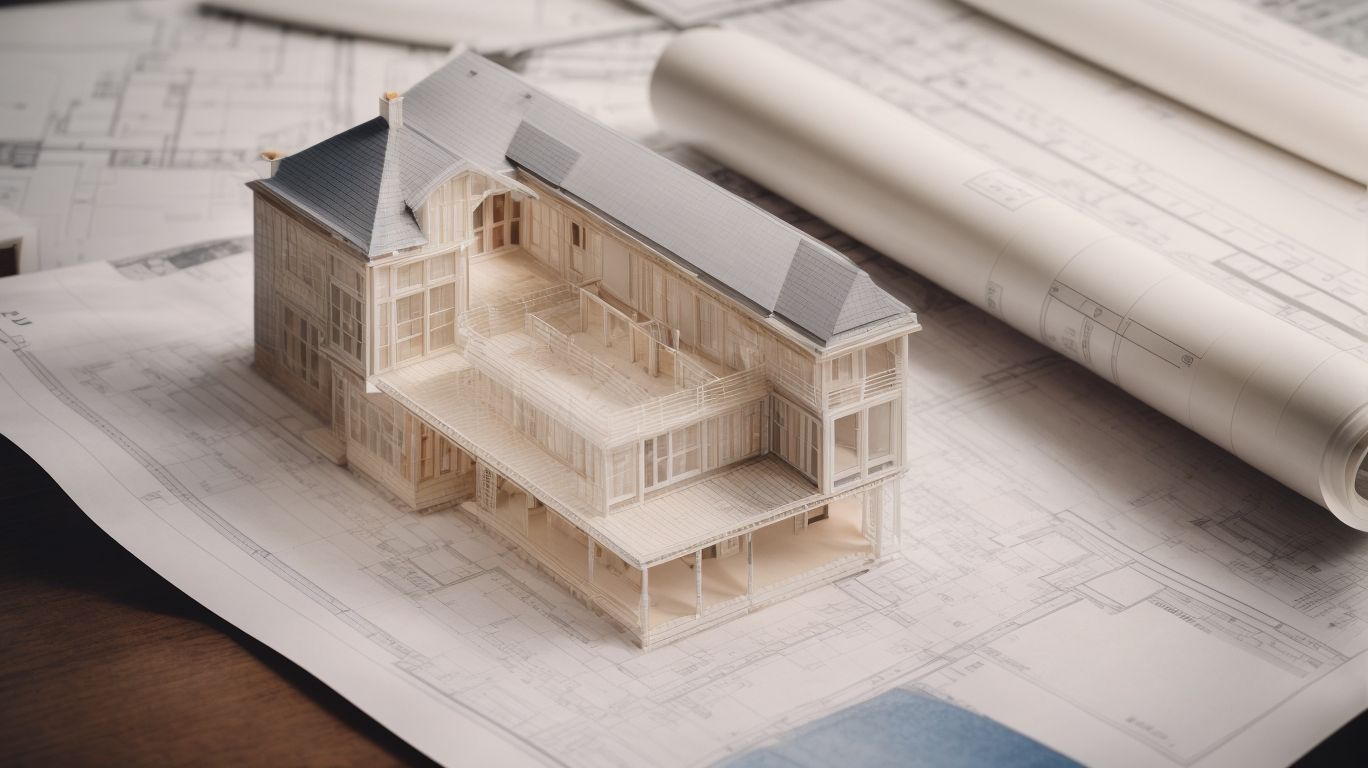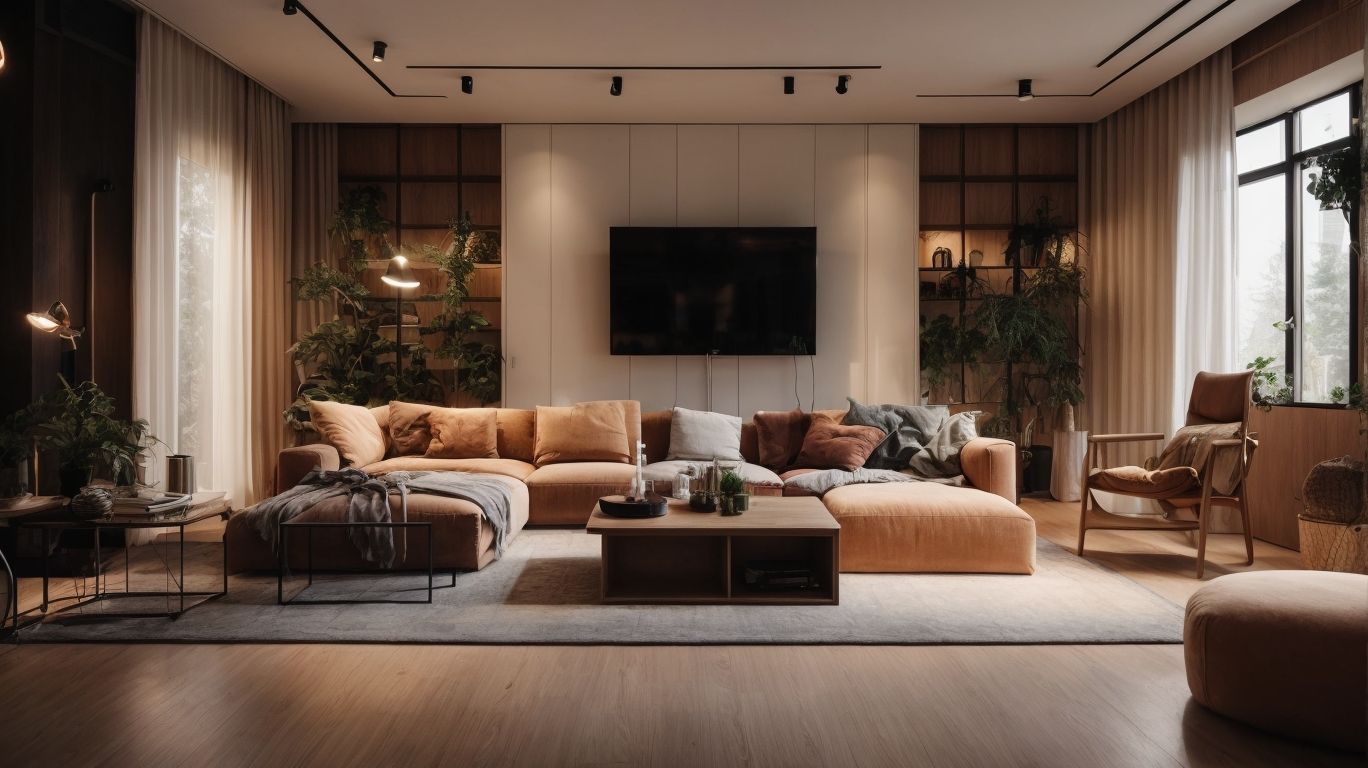
Creative and Safe: Balancing Design with Structural Engineering
Structural engineering and design are two crucial elements in the construction and architecture industry. Combining creativity with safety is essential for creating structures that are not only visually appealing but also structurally sound.
In this article, we will explore the importance of balancing design with structural engineering, the challenges that come with it, and how these two disciplines can work together. We will also take a look at some successful examples and discuss future possibilities in this dynamic field.
Whether you’re an aspiring engineer or simply curious about the world of architecture, this article will provide valuable insights into the intricate relationship between design and structural engineering.
What Is Structural Engineering?
Structural engineering involves the creative and safe design of building structures, combining principles of architecture, innovation, and construction to ensure integrity, safety, and stability.
Structural engineering plays a vital role in analyzing the behavior of materials and elements within a structure. This includes considering building codes, material properties, and innovative engineering solutions to create designs that can withstand natural forces like wind and earthquakes.
The expertise of structural engineers ensures that buildings are not only aesthetically pleasing, but also functionally sound and meet safety standards and regulations. By integrating advanced technologies and cutting-edge methods, structural engineering continuously contributes to the evolution of the construction industry.
What Is Design?
Design encompasses the safe and creative integration of aesthetics, functionality, and structural balance, reflecting a harmonious blend of engineering expertise and artistic innovation.
Design plays a crucial role in ensuring that buildings and structures are not only visually appealing but also meet the necessary construction regulations and safety standards.
By combining innovative techniques and cutting-edge materials, design fosters sustainability and adaptability in the ever-evolving construction landscape.
The seamless fusion of form and function in design not only enhances the user experience but also contributes to the overall environmental and social impact of architectural endeavors.
Why Is Balancing Design with Structural Engineering Important?
Balancing design with structural engineering is crucial to ensure the safe and creative integration of architectural integrity, functional sustainability, and collaborative innovation, reflecting a harmonious approach to construction.
This delicate balance between design and structural engineering is essential in creating structures that not only inspire and captivate aesthetically but also guarantee the safety and functionality of the built environment.
By fostering a symbiotic relationship between the two disciplines, architects and engineers can harness the power of design creativity and engineering principles to push the boundaries of what is possible, while maintaining a steadfast commitment to structural safety and sustainable construction practices.
This collaboration results in innovative solutions that harmonize form and function, setting a new standard for the future of architecture and engineering.
What Are The Challenges Of Balancing Design With Structural Engineering?
The challenges of balancing design with structural engineering encompass addressing the complexities of safe innovation, creative aesthetics, and stability, while conducting comprehensive risk assessments and ensuring adherence to building codes and safety standards.
Collaboration between structural engineers and designers is crucial to integrate innovative and safe design elements. It is essential to balance aesthetics and safety, without compromising stability. This requires careful attention to detail and constant risk assessment to create a visually appealing and structurally sound structure that meets safety standards.
Meeting Safety Standards
Meeting safety standards in construction involves rigorous adherence to building codes, comprehensive risk assessment, and a steadfast commitment to ensuring structural integrity and safe construction practices.
This effort demands a deep understanding of local and national construction regulations, as well as a proactive approach to identifying potential hazards and mitigating risks.
Striking a balance between innovation and tradition, construction professionals continually navigate complex challenges to prioritize safety and work toward the common goal of creating secure and sustainable structures.
To achieve this, ongoing education and training on safety protocols, materials, and technologies play a pivotal role in upholding the highest safety standards in the construction industry.
Finding Aesthetic Solutions
Finding aesthetic solutions requires a harmonious blend of design creativity, architectural integrity, and artistic innovation, reflecting the seamless integration of aesthetic appeal and structural functionality.
Attention to detail, such as the use of elegant materials and the incorporation of natural light, plays a pivotal role in realizing a space that is both visually appealing and functional.
The challenge lies in striking the delicate balance of form and function, where the design not only captivates the eye but also serves its intended purpose.
Architectural creativity comes into play as spaces are reimagined to evoke emotions and enhance experiences.
Ultimately, achieving a harmonious interplay of aesthetics and functionality is the hallmark of successful artistic design.
Managing Budget and Time Constraints
Managing budget and time constraints in construction projects requires innovative engineering solutions, safe innovation, and creative collaboration to ensure the successful integration of design and structural integrity within predefined resource and schedule parameters.
This means finding ways to maximize limited resources while adhering to strict deadlines, which often necessitates thinking outside the box and implementing inventive strategies.
Effective project management involves harnessing the expertise of engineers and designers to develop cost-effective and safe designs that meet the project’s unique requirements. By fostering a collaborative environment that encourages creative problem-solving, construction teams can overcome challenges and achieve successful outcomes, all while prioritizing safety and quality in their work.
How Can Design and Structural Engineering Work Together?
Design and structural engineering can work together through collaborative communication, integrating structural elements into design, and leveraging engineering expertise to achieve a harmonious balance between functionality and creative collaboration.
This collaborative approach allows for the seamless integration of structural considerations from the initial stages of design, ensuring that the aesthetic and functional aspects are intricately woven together.
By intertwining the intricate details of structural engineering with the creativity of design, projects can achieve a marriage of form and function that not only meets the practical needs but also elevates the overall visual appeal.
The synergy between design and structural engineering fosters an environment where innovation thrives, resulting in solutions that go beyond traditional boundaries.
Collaboration and Communication
Collaboration and communication play pivotal roles in generating creative solutions and integrating engineering design, fostering a symbiotic relationship between design and structural engineering for cohesive and innovative construction.
Collaboration between design and structural engineering professionals brings diverse perspectives to the table, leading to a synthesis of innovative ideas and practical considerations.
Effective communication ensures that these ideas are effectively shared and integrated, resulting in cohesive and efficient engineering designs. This dynamic partnership allows for the seamless integration of aesthetic vision with structural functionality, driving the creation of sustainable and distinctive architectural solutions.
Incorporating Structural Elements into Design
Incorporating structural elements into design involves meticulous consideration of building materials, optimized load distribution, and adherence to specific design specifications, ensuring the seamless integration of structural and architectural principles.
This process requires architects and engineers to carefully select suitable building materials such as steel, concrete, timber, or masonry. They must take into account their strength, durability, and compatibility with the design vision.
Understanding load distribution is crucial in preventing structural failures. By strategically placing and connecting load-bearing elements, the weight is evenly distributed to support the structure’s integrity. Attention to design specifications ensures that the structure not only meets functional requirements but also complies with safety and regulatory standards.
Utilizing Technology and Tools
Utilizing advanced technology and innovative tools facilitates the optimization of structural framework, engineering aesthetics, and construction creativity, enabling the seamless integration of design and structural innovation.
These modern advancements empower engineers and architects to push the boundaries of traditional building design, resulting in structures that not only meet functional requirements but also captivate and inspire.
By leveraging virtual reality simulations, parametric modeling, and advanced materials, the construction industry can achieve unprecedented levels of intricacy and precision, yielding buildings that are not only structurally sound but also visually stunning.
The interplay of technology and creative vision opens up new possibilities for both form and function, enriching the built environment with unparalleled artistry and sophistication.
What Are Some Examples of Successful Balancing of Design and Structural Engineering?
Several iconic structures exemplify the successful balancing of design and structural engineering, showcasing exceptional architectural creativity, innovative engineering solutions, and the seamless integration of aesthetics and functionality.
These remarkable buildings display an ingenious blend of form and function. Take for example the Sydney Opera House’s elegant sail-like roofs that not only add to its aesthetic appeal, but also serve essential acoustic requirements.
Similarly, the Burj Khalifa’s striking design ingeniously supports its immense vertical load. And the Petronas Towers in Malaysia are a prime example of integrating aesthetics with structural ingenuity, featuring a sleek, modern facade while withstanding high wind forces.
It’s truly remarkable how these structures harmoniously unite captivating design with robust engineering. They not only enhance the urban landscape, but also encapsulate human achievement.
Burj Khalifa
The Burj Khalifa stands as a testament to unparalleled architectural design, extraordinary structural stability, and groundbreaking engineering innovation, representing a pinnacle of successful balancing between design and structural engineering.
The seamless integration of these elements is evident in its elegant tapering silhouette, which not only adds to its aesthetic appeal but also serves a crucial engineering function by reducing wind resistance.
The innovative use of materials such as high-strength concrete and structural steel showcases the adaptability and resilience of modern engineering solutions. The incorporation of advanced technological systems for monitoring and maintenance further demonstrates the commitment to ensuring the structural integrity of this iconic skyscraper.
Sydney Opera House
The Sydney Opera House epitomizes design innovation, structural creativity, and the embodiment of safe architecture, serving as a prime example of successful balancing between design and structural engineering.
Its iconic sail-like shells not only dazzle visitors with their visual appeal but also showcase the remarkable fusion of art and engineering.
The use of precast concrete panels and the challenging construction process highlight the dedication to safety and structural integrity.
The building’s unique geometry and precise coordination between form and function stand as a testament to the seamless combination of aesthetics and practicality in architectural design.
Golden Gate Bridge
The Golden Gate Bridge represents a harmonious blend of structural safety, engineering aesthetics, and creative collaboration, symbolizing a remarkable achievement in the successful balancing of design and structural engineering.
The Golden Gate Bridge’s suspension design features elegant towers and sweeping cables, showcasing the importance of engineering aesthetics. This collaboration between architects and engineers results in a visually stunning and structurally sound structure.
Every aspect of the bridge, from its iconic International Orange color to its intricate trusswork and innovative use of materials, highlights the successful partnership between art and engineering. This attention to detail is evident in every aspect of the bridge, making it a true masterpiece.
What Are The Future Possibilities for Balancing Design and Structural Engineering?
The future possibilities for balancing design and structural engineering include advancements in sustainable design, pioneering engineering innovation, and the seamless integration of art and engineering, paving the way for transformative developments in architectural creativity and construction sustainability.
These advancements are poised to revolutionize the way we conceptualize and construct buildings. Integrating sustainable materials, energy-efficient systems, and innovative structural designs will not only enhance the aesthetics of architecture but also contribute significantly to reducing environmental impact.
It’s exciting to envision a future where structures seamlessly blend functionality, sustainability, and artistic expression, shaping a more harmonious and eco-conscious built environment.
Sustainable Design and Engineering
The domain of sustainable design and engineering presents opportunities for engineering solutions, safe innovation, and creative aesthetics, fostering a harmonious synergy between environmental responsibility and innovative construction practices.
This intersection of creative aesthetics with sustainable engineering offers a platform for reimagining traditional construction approaches, integrating eco-friendly materials, and exploring innovative design techniques.
Sustainable design and engineering encourage the use of renewable energy sources, efficient water and waste management, and the incorporation of natural elements into architectural solutions, thereby aligning functionality with environmental consciousness.
The pursuit of sustainable design also opens doors for harmonizing practical engineering solutions with visually striking and socially resonant designs, emphasizing the coexistence of aesthetic appeal with environmental stewardship.
Advancements in Technology
The forthcoming advancements in technology are poised to revolutionize structural analysis, foster engineering creativity, and propel construction creativity to new heights, ushering in an era of unprecedented innovation in design and structural engineering.
These technological advancements will facilitate the development of sophisticated tools and software that can analyze complex structural systems with greater precision and efficiency. This will empower engineers to envision and implement more daring and innovative designs, pushing the boundaries of what was previously considered possible.
The integration of advanced technology in construction processes will streamline project management, enhance safety measures, and optimize resource utilization, ultimately leading to more sustainable and cost-effective construction practices.
Integration of Art and Engineering
The seamless integration of art and engineering promises to redefine architectural creativity, accentuate engineering aesthetics, and inspire new realms of artistic design, presenting boundless opportunities for the harmonious fusion of creativity in design and structural engineering.
This integration offers a platform for architects and engineers to coalesce their skills, leveraging artistic sensibilities to inform structural choices and engineering principles to elevate artistic designs.
The incorporation of artistic elements in engineering projects not only adds aesthetic appeal but also promotes a deeper understanding of human experiences through built environments. This approach encourages innovative problem-solving, where functionality and beauty are intertwined, enabling the creation of structures that not only serve their purpose but also elevate the human spirit through intricate designs and thoughtful engineering.




No Comments